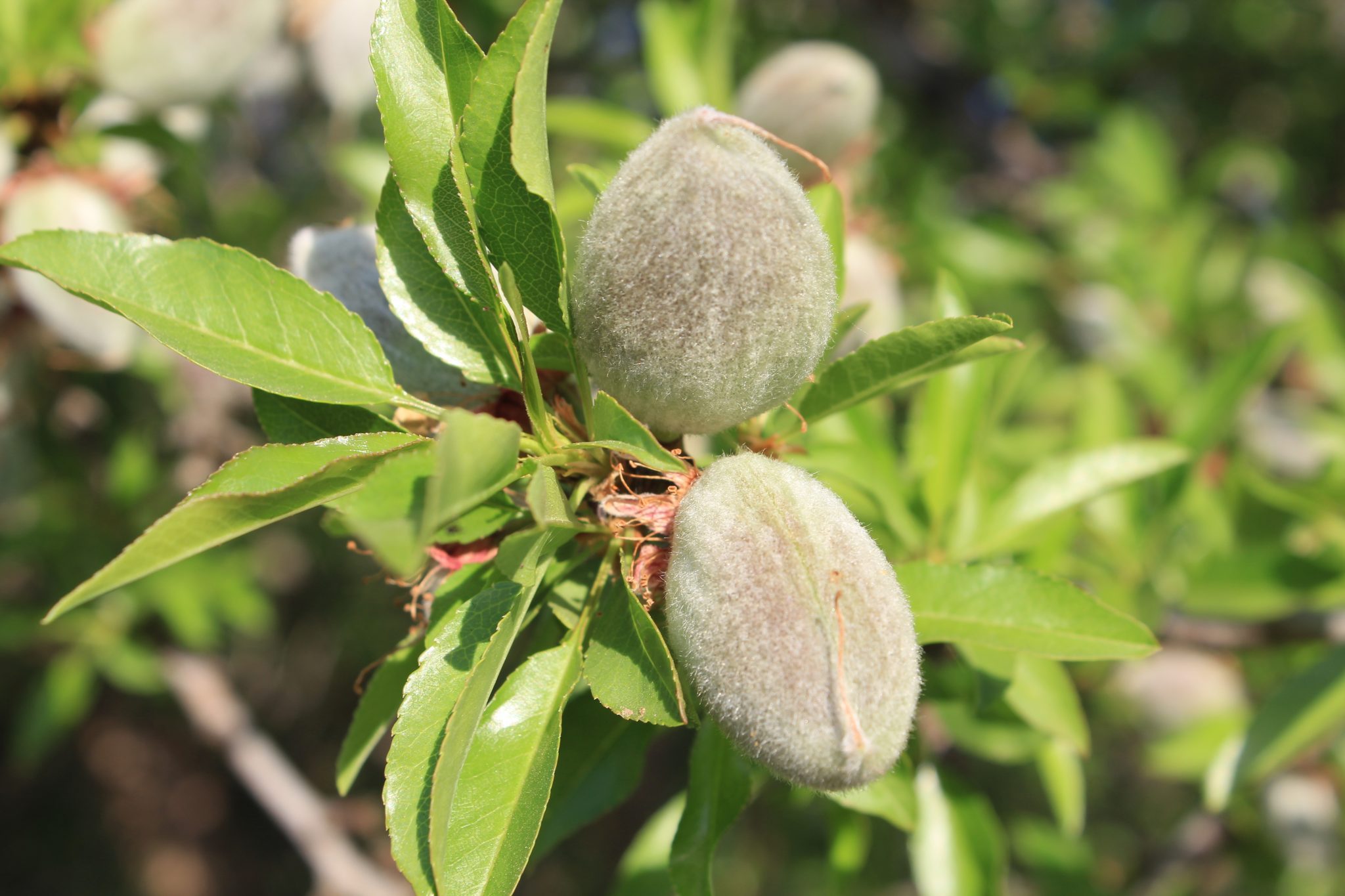
Fluctuating temperatures this spring may serve as a warning to almond growers and PCAs that timing hull split sprays for navel orangeworm control could be challenging.
Almond Board of California reports that it is important to anticipate hull split and time spray applications for navel orangeworm control as well as prevention of peach twig borer damage and hull rot.
Early hull split is when the hull begins to separate at the suture. If the second generation of NOW is emerging from the mummies, the nut volatiles released at hull split signal the female NOW to lay eggs on the suture.
The stage just before the hull split occurs when there is the deep “v” in the suture is when almond kernels are susceptible to NOW.
Knowing when that first flight of NOW will start while also watching for early splits is standard practice in timing hull split sprays, Justin Nay with Integral Ag said. He said heat units (Degree Days) are tracked to predict NOW emergence, and then nuts in the upper tree canopy and on the edges of the orchard are watched for early signs of hull split. Warm April temperatures and cooler May temperatures this year caused the first NOW flight to be drawn out with several peaks and valleys in monitoring trap captures; therefore, effective hull split spray timing could be tricky this year.
For example, he said, in 2015, the entire first NOW flight was earlier than the start of Nonpareil hull split for many ranches. Last year’s first flight NOW emergence followed a standard curve pattern that eventually led to a later second flight that went well into hull split. Growers and advisors need to pay attention, Nay said, to the overwintering flight characteristics to help make better informed hull split spray timing decisions.
Nay said he first determines the NOW population in the orchard by monitoring NOW activity with monitoring traps and counting NOW larvae in mummy nuts in the winter. There can be instances, he said, where the NOW levels are not high enough in an orchard to warrant the cost of an insecticide application.
Almond hull split timing also varies based on weather conditions and variety as well as irrigation practices. Nonpareil typically starts hull split in late June into early July, earlier than some other varieties. Hulls of blank nuts, are the first to split. Trees on the edges of orchards will have earlier maturing nuts and the upper and outer portions of the canopies should be monitored.
Almond Board of California recommends hull split applications made no later than at 1% hull split to protect nuts from NOW damage. Once hull split begins, the entire orchard should be sprayed in five days or less.

Cecilia Parsons
Cecilia Parsons has spent the past 30 years covering agriculture in California for a variety of newspapers, magazines and organizations. During that time she has been fortunate to witness some of the important events that have shaped this diverse industry and worked hard to examine and explain these events for readers.
When Cecilia first moved to the San Joaquin Valley in 1976, her first journalism job was at a small daily newspaper where she covered “farm news.” From there she branched out to writing for a dairy magazine and a regional weekly agriculture publication.
Cecilia is part of a farming family from the rural community of Ducor where she also raises purebred sheep and is attempting to master versatility ranch horse riding.










